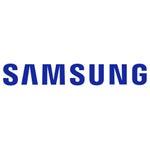News
iPhone 17 Display Upgrades Leaked: Bigger 6.3-inch Screen and New Slim Model Coming in 2025
iPhone 17 Display Upgrades Leaked: Bigger 6.3-inch Screen and New Slim Model Coming in 2025
In the world of smartphones, display real estate is power. With the upcoming iPhone 17 series, Apple is making subtle yet significant strides in that direction. The move to larger displays, fine-tuned screen technology, and a more unified hardware philosophy across models hints at Apple's refined strategy for the next wave of mobile dominance.
In this comprehensive analysis, we break down the confirmed display specifications of the iPhone 17 lineup, contextualize them with historical trends, compare them against the competition, and explain what these changes mean for users, developers, and Apple's broader ecosystem.
Confirmed iPhone 17 Display Sizes (Lineup Breakdown)
|
Model |
Display Size |
Panel Type |
Refresh Rate |
Notes |
|
iPhone 17 |
6.3-inch |
OLED (expected) |
60Hz |
Base model; now matches Pro in size |
|
iPhone 17 Pro |
6.3-inch |
LTPO OLED |
120Hz ProMotion |
Brighter, smoother, high-end experience |
|
iPhone 17 Slim / Air |
6.6-inch |
OLED (expected) |
60Hz or 90Hz |
Replacing the 16 Plus; thinner chassis |
|
iPhone 17 Pro Max |
6.9-inch |
LTPO OLED |
120Hz ProMotion |
Largest, most advanced display |
Ross Young has a near-flawless track record when it comes to Apple display leaks. You can read more from DSCC's industry insights, and Apple displays roadmaps on displaysupplychain.com.
iPhone Display Evolution: From 4 Inches to 6.9 Inches
Apple's screen evolution is a textbook case of gradual adaptation to user behavior. Here's a snapshot of how far we've come:
-
iPhone 6 (2014): 4.7"
-
iPhone X (2017): 5.8"
-
iPhone 12 (2020): 6.1"
-
iPhone 14 Pro Max: 6.7"
-
iPhone 17 Pro Max (2025): 6.9"
The base model's upgrade from 6.1 to 6.3 inches marks the first diagonal change since the iPhone 12, positioning the base iPhone 17 alongside the Pro variant in screen real estate for the first time since the iPhone 15 series. This symmetry offers users a larger canvas without requiring an upgrade to the Pro.
Display Technologies: LTPO, ProMotion & Peak Brightness
Let's unpack the technological differences between the standard and Pro models:
● OLED vs LTPO OLED
While the base models will likely stick with standard OLED, the Pro and Pro Max are expected to use LTPO (Low-Temperature Polycrystalline Oxide) OLED, enabling:
-
Adaptive refresh rates (10–120Hz) for better battery efficiency.
-
Always-on Display (a Pro exclusive feature).
-
Power savings during static usage.
● ProMotion: Not Just a Buzzword
Introduced in the iPhone 13 Pro, ProMotion technology boosts refresh rate to 120Hz, dramatically enhancing:
-
Scrolling fluidity
-
Gaming response times
-
Overall UI responsiveness
This remains exclusive to the Pro lineup, giving the iPhone 17 Pro a notable edge for creatives, gamers, and professionals.
● Peak Brightness
While Apple hasn't confirmed exact brightness levels, Pro models are expected to surpass 2,000 nits (as seen in the iPhone 15 Pro Max), making them top-tier for outdoor readability and HDR content.
Strategic Implications: Why Apple is Upsizing Displays
Apple's decision to enlarge the iPhone 17 base model's screen to 6.3 inches and introduce a new 6.6-inch Slim model is no accident. It's a response to:
- Market demand for larger screens: More users are streaming, gaming, and editing on their phones than ever before.
- Segment unification: Apple may aim to blur the gap between the base and Pro models in terms of screen size, focusing upgrades on technology rather than form factor.
- Design shifts: Rumors suggest the Slim model will be thinner and lighter, likely a nod to the growing female user base, which prefers more ergonomic devices.
Pixel Density, Resolution & PPI: What to Expect
Apple has historically maintained a high pixel density across the board (~460ppi). Here's a projection based on current display trends:
|
Model |
Expected Resolution |
Pixel Density (PPI) |
|
iPhone 17 |
~2556 x 1179 |
~460 |
|
iPhone 17 Pro |
~2556 x 1179 (ProMotion) |
~460 |
|
iPhone 17 Slim |
~2778 x 1284 |
~460 |
|
iPhone 17 Pro Max |
~2796 x 1290 |
~460+ |
Apple has mastered visual consistency, ensuring sharp, color-accurate displays across all models without overwhelming users with technical specifications.
Supply Chain & Manufacturing: Who's Building the iPhone 17 Screens?
Apple typically splits its display sourcing between:
-
Samsung Display (Pro models, LTPO OLED)
-
LG Display
-
BOE (increasing role in base models)
With rising tensions in global supply chains, Apple has been diversifying its operations away from China, and the iPhone 17 display orders could reflect this shift. Expect higher LTPO yields from Samsung and new fabrication techniques (such as hybrid OLED) entering Apple's roadmap.
How iPhone 17 Displays Compare to Android Rivals
Let's benchmark Apple's new screens against top-tier Androids:
|
Phone |
Display Size |
Refresh Rate |
Peak Brightness |
|
iPhone 17 Pro Max |
6.9" |
120Hz |
~2,000+ nits |
|
Samsung Galaxy S24 Ultra |
6.8" |
120Hz LTPO |
~2,600 nits |
Apple's advantage remains in calibration, power efficiency, and system-wide integration, even if raw numbers sometimes favor Android.
What This Means for Users
Whether you're a casual user or a tech enthusiast, here's how the iPhone 17's display changes affect you:
-
More immersive media experiences (especially for base users now at 6.3").
-
Better visual clarity outdoors (thanks to brighter Pro models).
-
Greater choice across sizes (from 6.3" to 6.9") for personal preference.
-
Potentially better battery life with LTPO in Pros.
For Developers & Designers: What to Prepare For
With display sizes shifting, developers should begin testing UI scalability for:
-
6.3-inch base devices with Pro-like width
-
6.6-inch Air model, which may have a different aspect ratio
-
6.9-inch canvas for immersive experiences
Expect updates to Xcode's device preview and potential changes in safe area insets.
Frequently Asked Questions
Q: Will all iPhone 17 models support ProMotion?
A: No, only the Pro and Pro Max will support ProMotion with 120Hz refresh rates.
Q: Is the iPhone 17 Slim a replacement for the Plus model?
A: Yes, the 6.6-inch Slim (also rumored as iPhone 17 Air) will likely replace the 6.7-inch Plus.
Q: What display type will the iPhone 17 base model use?
A: Most likely standard OLED, not LTPO.
Q: How does the iPhone 17 compare to the iPhone 16 in screen size?
A: The base model increases from 6.1 to 6.3 inches, while the Pro Max stays at 6.9 inches.
Related Articles
Conclusion: A Display-Driven Redesign for the Next Era
-
The iPhone 17's display updates aren't just about bigger screens. They focus on strategic alignment, user-centric design, and preparing for the AI-first mobile future.
-
As Apple inches closer to convergence between its base and Pro devices in terms of size, it continues to differentiate them through sophistication, including ProMotion, LTPO, and higher brightness ceilings.
-
Whether you're planning your next upgrade or watching Apple's strategic moves unfold, one thing is clear: the iPhone 17's display is more than just a number. It's a statement.












